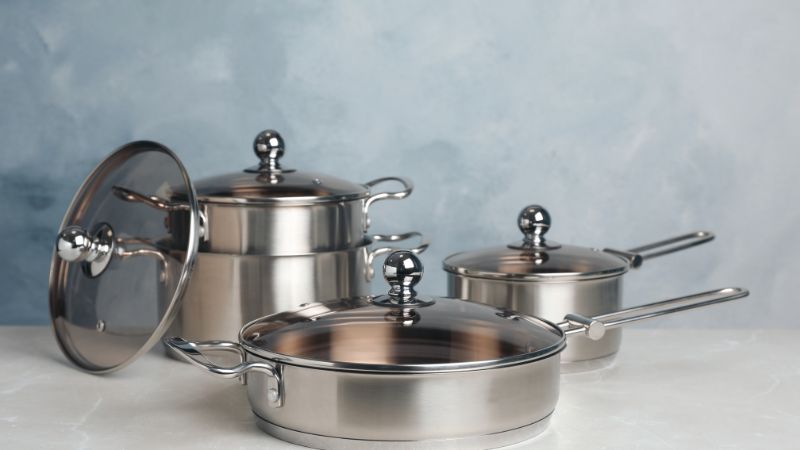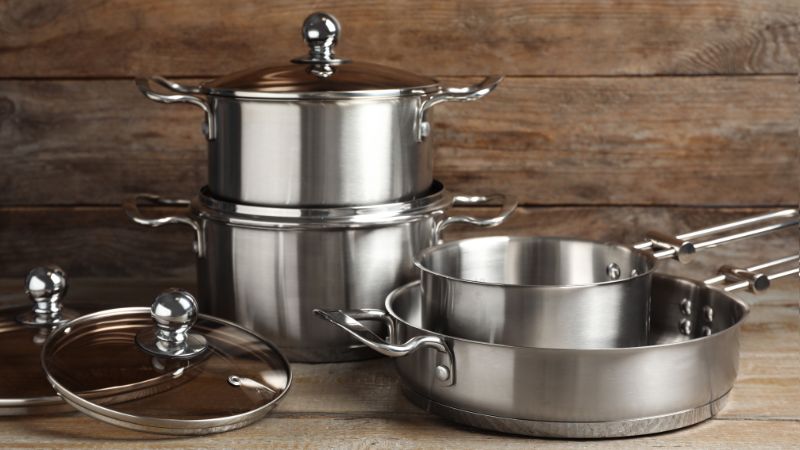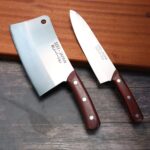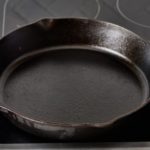1. Tips for Preventing Food from Sticking to Your Stainless Steel Pots and Pans
To avoid food sticking, it is recommended to use stainless steel cookware instead of non-stick options. Non-stick coatings can degrade over time, flaking off, and potentially contaminating your food. Stainless steel pots and pans offer a more durable alternative.

Stainless Steel Cookware
When using stainless steel cookware, follow these tips: Start by heating your pot or pan over low heat and gradually increase the temperature over 1-3 minutes. To test if it’s hot enough, sprinkle a few drops of water on the surface; if it’s ready, the water will skid and evaporate quickly.
If the water sizzles and doesn’t skid, wait an additional 30 seconds to let the cookware get hotter. Then, add oil and heat for a minute before adding your food. If you’re frying or sautéing, wait until one side is deeply browned before flipping it over.
2. Important Considerations When Using Stainless Steel Cookware
– When seasoning your food, always add salt and seasoning powders when the water is already boiling. This reduces the risk of undissolved salt or powder settling at the bottom of the pot, which can lead to corrosion.

Prolong the Lifespan of Your Stainless Steel Cookware
– Use a separate cleaning agent for your stainless steel kitchenware. Avoid chlorine-based cleaners as they can damage the surface. Opt for soft sponges or scrubbers to prevent scratching.
– Do not pour cold water into a hot pot or pan. This thermal shock can damage the layers of your stainless steel cookware and make it more difficult to clean.
– Never leave an empty pot or pan, especially with only oil, on a hot stove at high temperatures. This can cause discoloration, warping, and other damage to your stainless steel cookware.
How to Stop Constant Dripping of Air Conditioner Water onto the Wall?
“A constant drip from your air conditioner can be a real nuisance and, if left unattended, can cause damage to your walls and property. This is a common issue faced by many homeowners, and it’s important to take swift action to prevent any further complications. So, what should you do if you find yourself in this situation?”
Why Do I Need a New Frying Pan? How the Right Non-Stick, Durable Pan Can Transform Your Cooking Experience
Introducing the ultimate kitchen companion – the revolutionary new pan that will transform the way you cook! Uncover the secrets of this extraordinary pan and discover how it can simplify your culinary adventures. With its state-of-the-art non-stick surface, this pan promises effortless cooking and cleaning, making it the perfect addition to any home chef’s arsenal. Get ready to explore a whole new world of delicious possibilities with this game-changing pan!




































